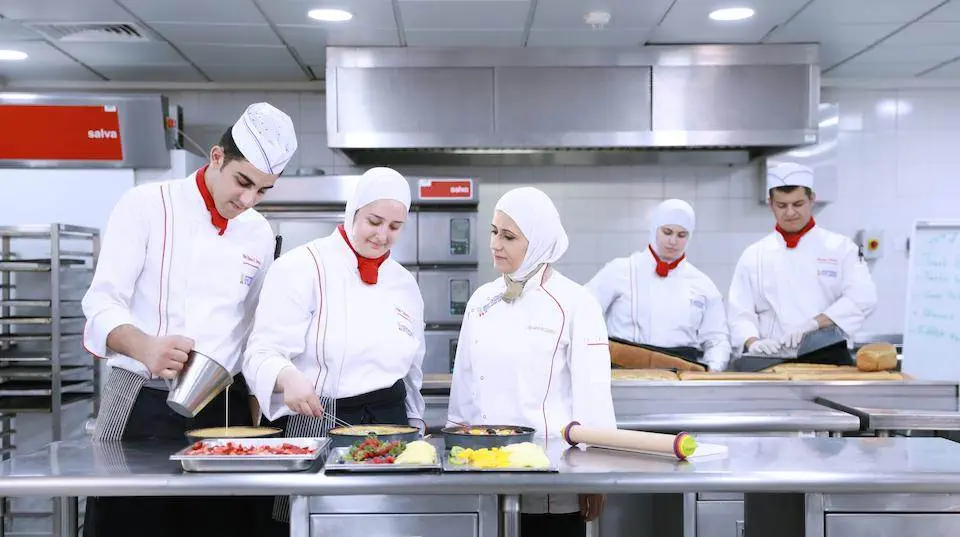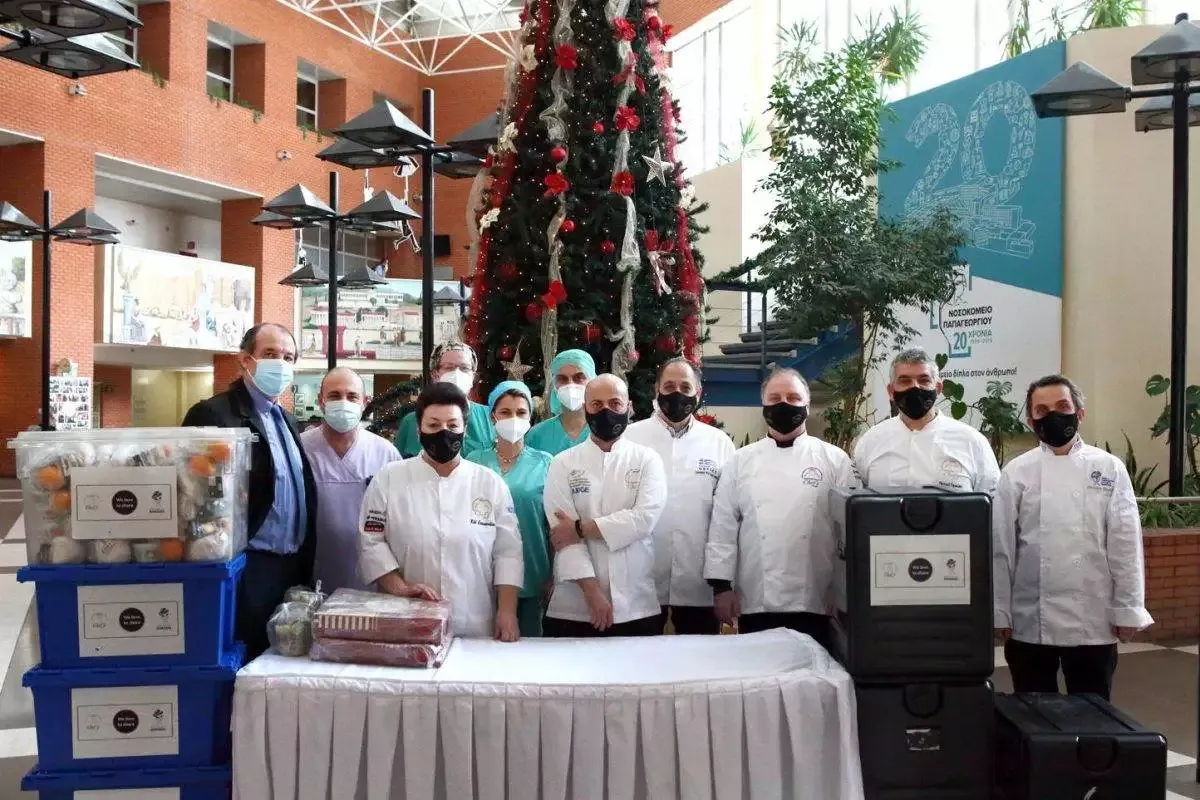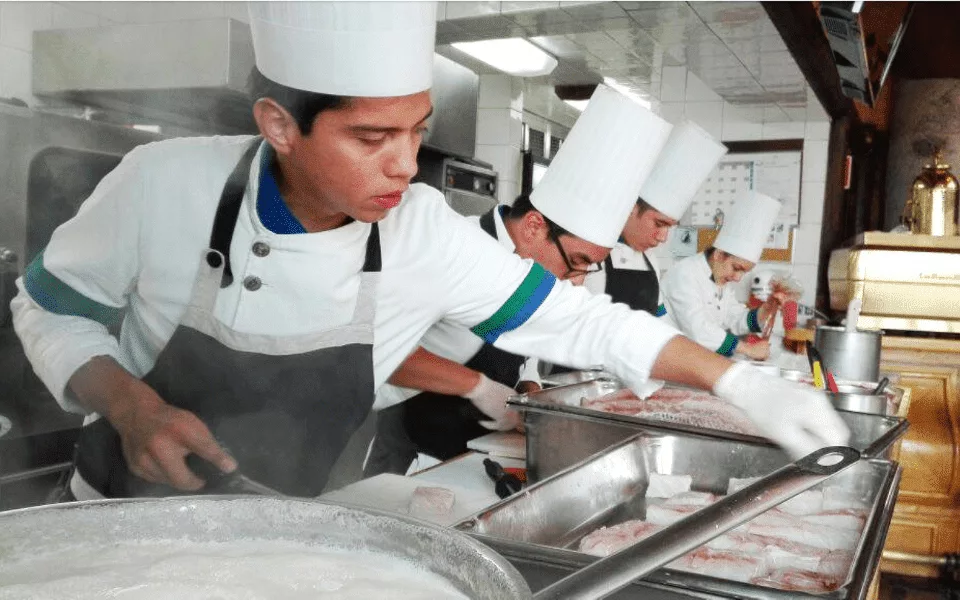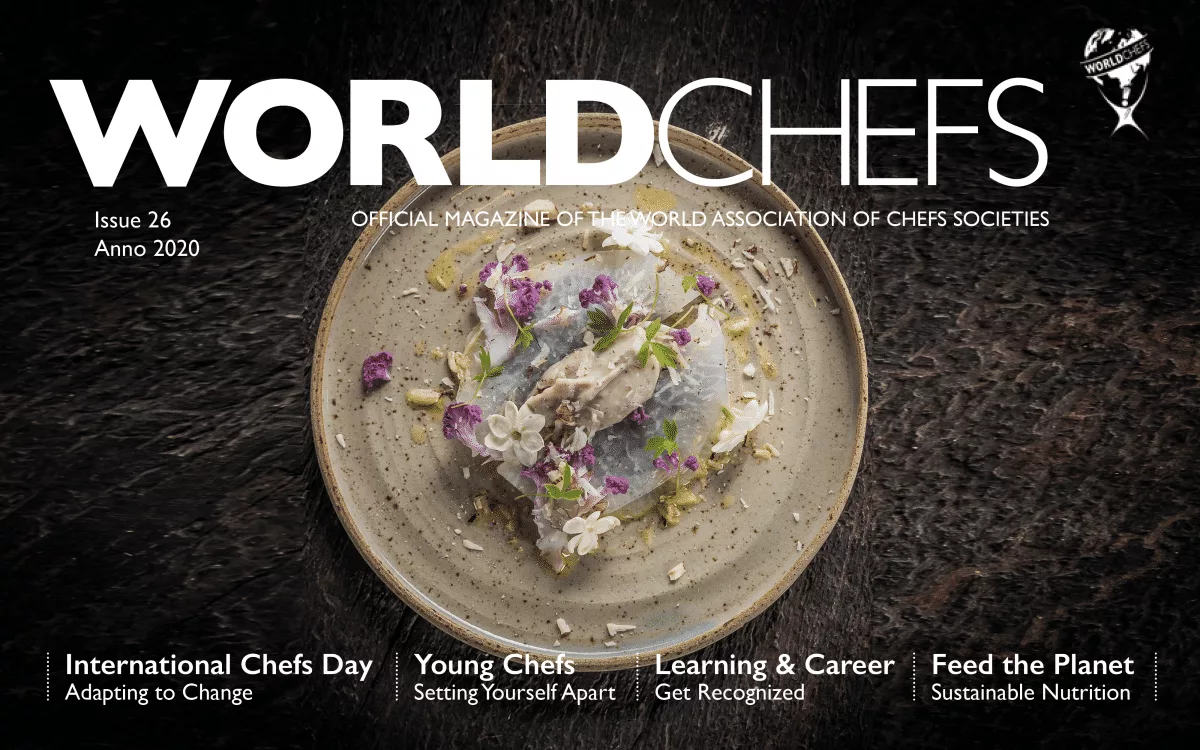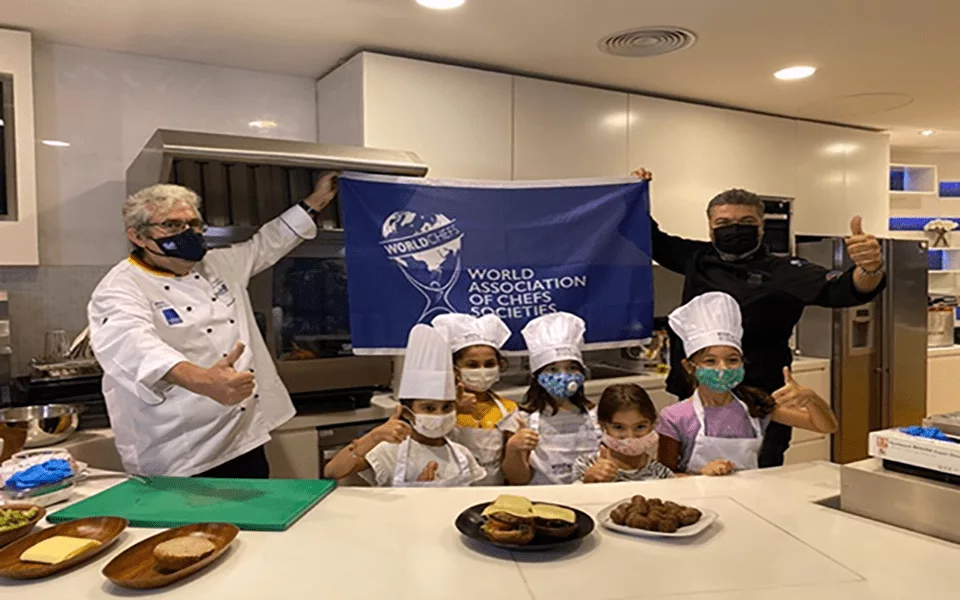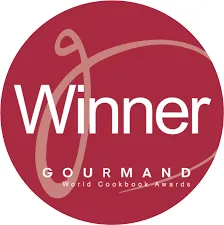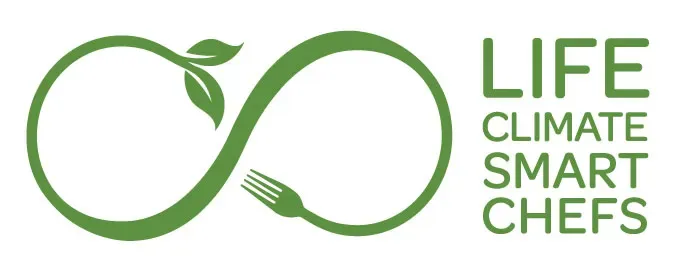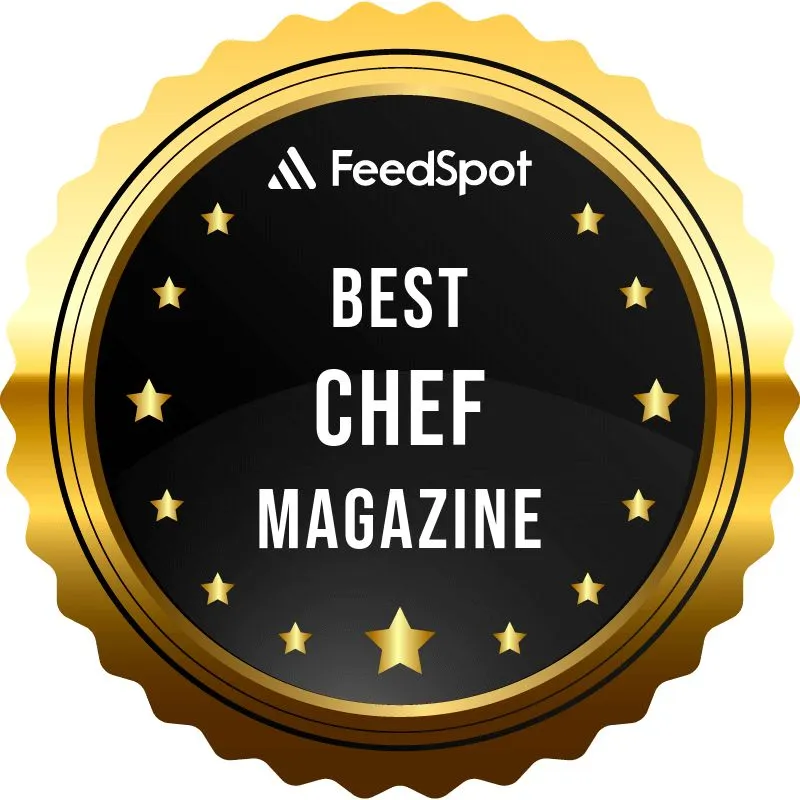
Sim Chef! Worldchefs Academy launches Portuguese Pre-Commis Chef Course!
(Portuguese translation included/Tradução portugesa incluída)
PARIS December 10, 2020
Worldchefs Academy is excited to announce the launch of its online Pre-Commis Chef Course and mobile app in Portuguese! Adding to its repertoire of English and Spanish courses, this free online course and mobile app is now available in Portuguese for everyone, no matter the education or skills level.
With curriculum covering the basics of culinary professionalism, food service operations, culinary theory, food hygiene and sanitation, basic cooking and culinary nutrition, the Pre-Commis Chef Course can be followed as a complete curriculum and individual lessons can be used to compliment other existing courses or provide theoretical components to an in-service, kitchen apprenticeship.
“For the entire Worldchefs Board of Directors, it is important to expand this opportunity for aspiring chefs all around the world in as many languages as possible. We are proud to be offering the Pre-Commis Chef Course now in Portuguese, Spanish and English with many more languages to come!” stated, Worldchefs President Thomas Gugler.
Participants can learn through the web-based platform or via the mobile app offering an offline study mode. By connecting to the Internet when it is available they can download the course via the mobile app and study at any time, with or without Internet. Then they simply go back online when ready to complete the final assessment. The Pre-Commis Chef Course also links to Worldchefs Certification opportunities and is intended to be the first step on the culinary career pathway.
“In times when the foodservice industry is undergoing a significant transformation, it is even more important to support young talent to help them prepare for a professional career. As part of the global Nestlé Needs YOUth initiative, which aims to help 10 million young people to access economic opportunities around the world, Nestlé Professional’s YOCUTA program is designed to develop Young Culinary Talents, strengthening their theoretical and practical skills and preparing them for the workforce”, said Rodrigo Camacho, Nestlé Professional Business Head for the Americas.
Worldchefs Academy would like to say “OBRIGADO!!!” to our Portuguese language partner Nestlé Professional Americas and the YOCUTA program for all their support in making the course available to the Portuguese-speaking communities worldwide.
Worldchefs Academy would like to also thank and recognize our Portuguese Advisor and Chef Volunteer Tomás Pereira, Member of Associação de Cozinheiros Profissionais de Portugal for helping with the development of the Portuguese Pre-Commis Chef Course and content review.
About Worldchefs Academy
Worldchefs Academy, a division of World Association of Chefs Societies (Worldchefs) developed the Pre-Commis Chef online course and mobile app in conjunction with Nestlé Professional and the Pro Gastronomia Foundation to offer culinary education for aspiring chefs that may not have the means, mobility or flexibility to attend full-time culinary school. The Worldchefs Academy mobile app can be downloaded on both the App Store and Google Play, and is available at www.worldchefsacademy.com.
About YOCUTA
Launched in 2015 in Latin America by Nestlé Professional, the YOCUTA (Young Culinary Talents) has already helped over 3,000 young people, entering the culinary or foodservice industry. As part of Nestlé’s broader Nestlé Needs YOUth Initiative, whose ambition is to help ten million young people worldwide access economic opportunities by 2030, YOCUTA aims to develop young professionals building a wide range of theoretical and practical skills required to pursue a successful career in the culinary industry. The Worldchefs Academy is part of the YOCUTA Program, complementing the technical and operational culinary skills education for future foodservice professionals.
About Nestlé Professional www.nestleprofessional.com
Nestlé Professional is the global leader in branded hot and cold beverage and food solutions. The team of Nestlé Professional is passionate about serving the out of home industry and “Making More Possible” for their foodservice partners by leveraging a unique global reach, bringing knowledge and customized solutions to help customers, delight their consumers.
About Worldchefs www.worldchefs.org
The World Association of Chefs’ Societies, known as Worldchefs, is a dynamic global network with over 110 chef associations worldwide. A leading voice in hospitality, Worldchefs carries 91 years of history since its founding at the Sorbonne by the venerable Auguste Escoffier. Representing a mobilized international membership of culinary professionals, Worldchefs is committed to advancing the profession and leveraging the influence of the chef jacket for the betterment of the industry and humanity at large.
For more information on Worldchefs Academy, contact: info@worldchefsacademy.com



Em Português
Yes Chef! Worldchefs Academy lança o Curso Pré-Commis Chef em Portugues!
PARIS Dezembro 10, 2020
A Worldchefs Academy está entusiasmada por anunciar o lançamento do seu Curso de Cozinha Pré-Commis Chef on-line e da sua aplicação móvel em português! Acrescentando ao seu repertório de cursos de inglês e espanhol, este curso online gratuito e a aplicação móvel está agora disponível em português para todos, independentemente do nível de educação ou competências.
Com um currículo que abrange as bases do profissionalismo culinário, operações de serviço alimentar, teoria culinária, higiene e segurança alimentar, bases de cozinha e nutrição culinária, o Curso Pré-Commis Chef pode ser seguido como um currículo completo e aulas individuais que podem ser usadas para complementar outros cursos existentes ou fornecer componentes teóricas para um estágio de aprendizagem em cozinha.
“Para todo o Conselho de Administração da Worldchefs, é importante expandir esta oportunidade para aspirantes a chefs em todo o mundo, no maior número de línguas possível. Estamos orgulhosos de oferecer agora o Curso de Pré-Commis Chef em português, espanhol e inglês com muitas mais línguas por vir” declarou, o Presidente da Worldchefs Thomas Gugler.
Os participantes podem aprender através da plataforma baseada na web ou através da aplicação móvel que oferece um modo de estudo offline. Ao ligarem-se à Internet quando esta estiver disponível podem descarregar o curso através da aplicação móvel e estudar em qualquer altura, com ou sem Internet. Depois voltam simplesmente a estar online quando estiverem prontos para completar a avaliação final. O Curso Pré-Commis Chef também se liga a oportunidades de Certificação Worldchefs e pretende ser o primeiro passo no caminho da carreira culinária.
“Em tempos em que a indústria dos serviços alimentares está a sofrer uma transformação significativa, é ainda mais importante apoiar jovens talentos para os ajudar a prepararem-se para uma carreira profissional. Como parte da iniciativa global, Nestlé Precisa de Ti, que visa ajudar 10 milhões de jovens a aceder a oportunidades económicas em todo o mundo, o programa YOCUTA da Nestlé Professional foi concebido para desenvolver Jovens Talentos Culinários, reforçando as suas competências teóricas e práticas e preparando-os para a força de trabalho”, disse Rodrigo Camacho, Responsável Empresarial da Nestlé Professional para as Américas.
A Academia Worldchefs gostaria de dizer “OBRIGADO!!!” ao nosso parceiro de língua portuguesa, Nestlé Professional Américas e ao programa YOCUTA por todo o seu apoio na disponibilização do curso às comunidades de língua portuguesa de todo o mundo.
A Academia Worldchefs gostaria também de agradecer e reconhecer o nosso Conselheiro Português e Chef Voluntário Tomás Pereira, Membro da Associação de Cozinheiros Profissionais de Portugal por ajudar no desenvolvimento do Curso Português Pré-Commis Chef e na revisão de conteúdos.
Sobre a Academia Worldchefs
Worldchefs Academy, uma divisão da World Association of Chefs Societies (Worldchefs) desenvolveu o curso em linha Pre-Commis Chef e a aplicação móvel em conjunto com a Nestlé Professional e a Fundação Pro Gastronomia para oferecer educação culinária aos aspirantes a chefs que podem não ter os meios, mobilidade ou flexibilidade para frequentar a tempo inteiro a escola culinária. A aplicação móvel Worldchefs Academy pode ser descarregada tanto na App Store como no Google Play, e está disponível em www.worldchefsacademy.com
Sobre a YOCUTA
Lançado em 2015 na América Latina pela Nestlé Professional, o YOCUTA (Jovens Talentos Culinários) já ajudou mais de 3.000 jovens, entrando na indústria culinária ou de serviços alimentares. Como parte da iniciativa mais ampla da Nestlé “A Nestlé precisa de Ti”, cuja ambição é ajudar dez milhões de jovens em todo o mundo a aceder a oportunidades económicas até 2030, a YOCUTA tem como objectivo desenvolver jovens profissionais construindo uma vasta gama de competências teóricas e práticas necessárias para prosseguir uma carreira de sucesso na indústria culinária. A Academia Worldchefs faz parte do Programa YOCUTA, complementando a formação técnica e operacional de competências culinárias para futuros profissionais da indústria alimentar.
Sobre a Nestlé Professional www.nestleprofessional.com
Nestlé Professional é o líder mundial em soluções alimentares e de bebidas quentes e frias de marca. A equipa da Nestlé Professional é apaixonada por servir a indústria fora de casa e “Making More Possible” para os seus parceiros de serviços alimentares, alavancando um alcance global único, trazendo conhecimento e soluções personalizadas para ajudar os clientes, deliciar os seus consumidores.
Sobre a Worldchefs www.worldchefs.org
A World Association of Chefs’ Societies, conhecida como Worldchefs, é uma rede global dinâmica com mais de 110 associações de chefes de cozinha de todo o mundo. Uma voz líder em hospitalidade, Worldchefs carrega 91 anos de história desde a sua fundação na Sorbonne pelo venerável Auguste Escoffier. Representando uma mobilizada adesão internacional de profissionais da culinária, Worldchefs está empenhada em fazer avançar a profissão e alavancar a influência do casaco de cozinheiro para a melhoria da indústria e da humanidade em geral.
Para mais informações sobre a Academia Worldchefs, contactar: info@worldchefsacademy.com
ABOUT WORLDCHEFS
The World Association of Chefs’ Societies, known as Worldchefs, is a dynamic global network of 110 chef associations worldwide. A leading voice in the hospitality industry, Worldchefs carries 91 years of history since its founding at the Sorbonne by the venerable Auguste Escoffier. Representing a mobilized international membership of culinary professionals, Worldchefs is committed to advancing the profession and leveraging the influence of the chef jacket for the betterment of the industry and humanity at large.
Worldchefs is dedicated to raising culinary standards and social awareness through these core focus areas:
Education – Worldchefs offers support for education and professional development through the landmark Worldchefs Academy online training program, a diverse network of Worldchefs Education Partners and curriculums, and the world’s first Global Hospitality Certification recognizing on-the-job skills in hospitality;
Networking – Worldchefs connects culinary professionals around the world through their online community platform and provides a gateway for industry networking opportunities through endorsed events and the biennial Worldchefs Congress & Expo;
Competition – Worldchefs sets global standards for competition rules, provides Competition Seminars and assurance of Worldchefs Certified Judges, and operates the prestigious Global Chefs Challenge;
Humanitarianism & Sustainability – Worldchefs Feed the Planet and World Chefs Without Borders programs relieve food poverty, deliver crisis support, and promote sustainability across the globe.
For more information about Worldchefs, visit us at www.worldchefs.org.


